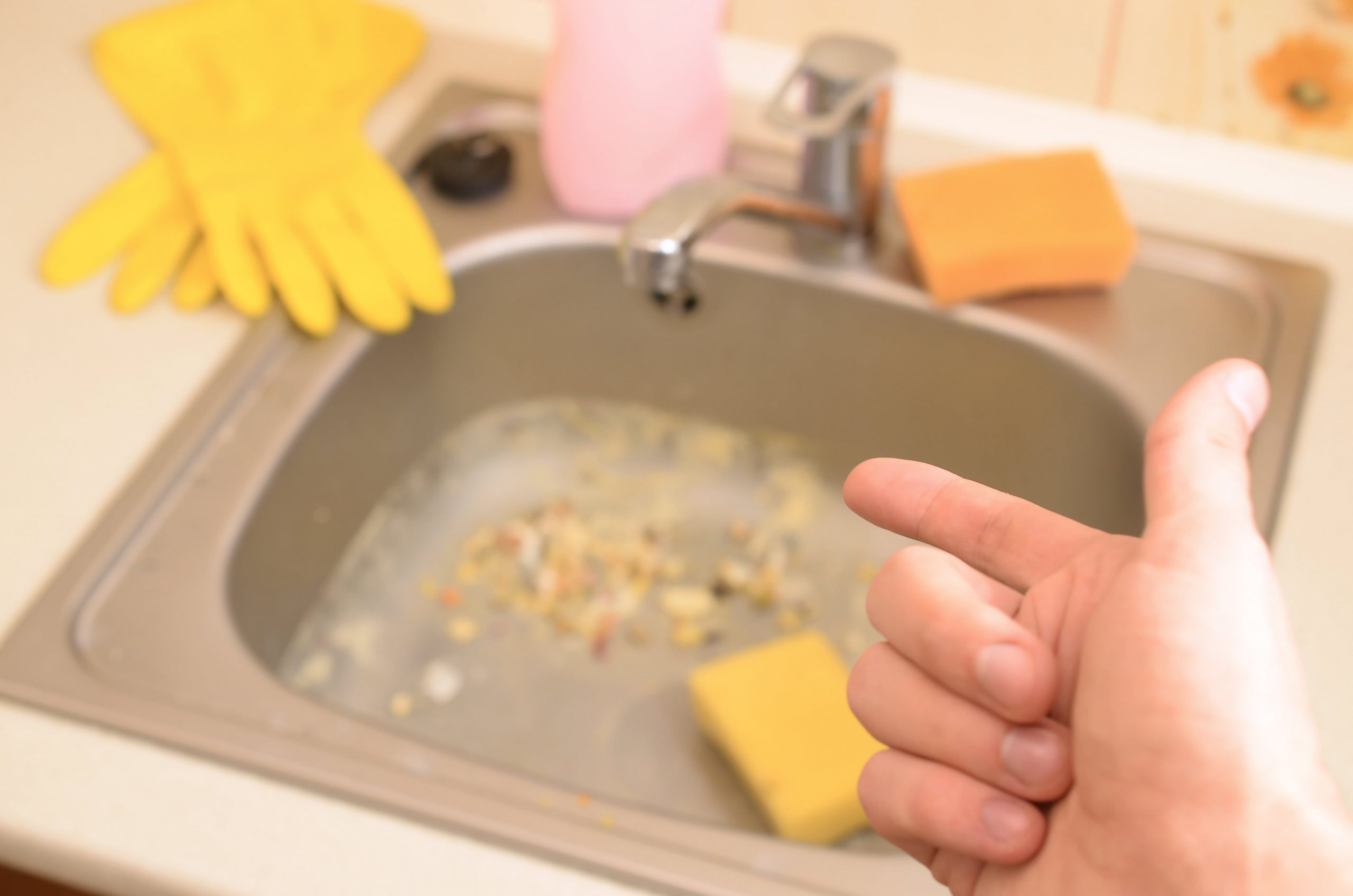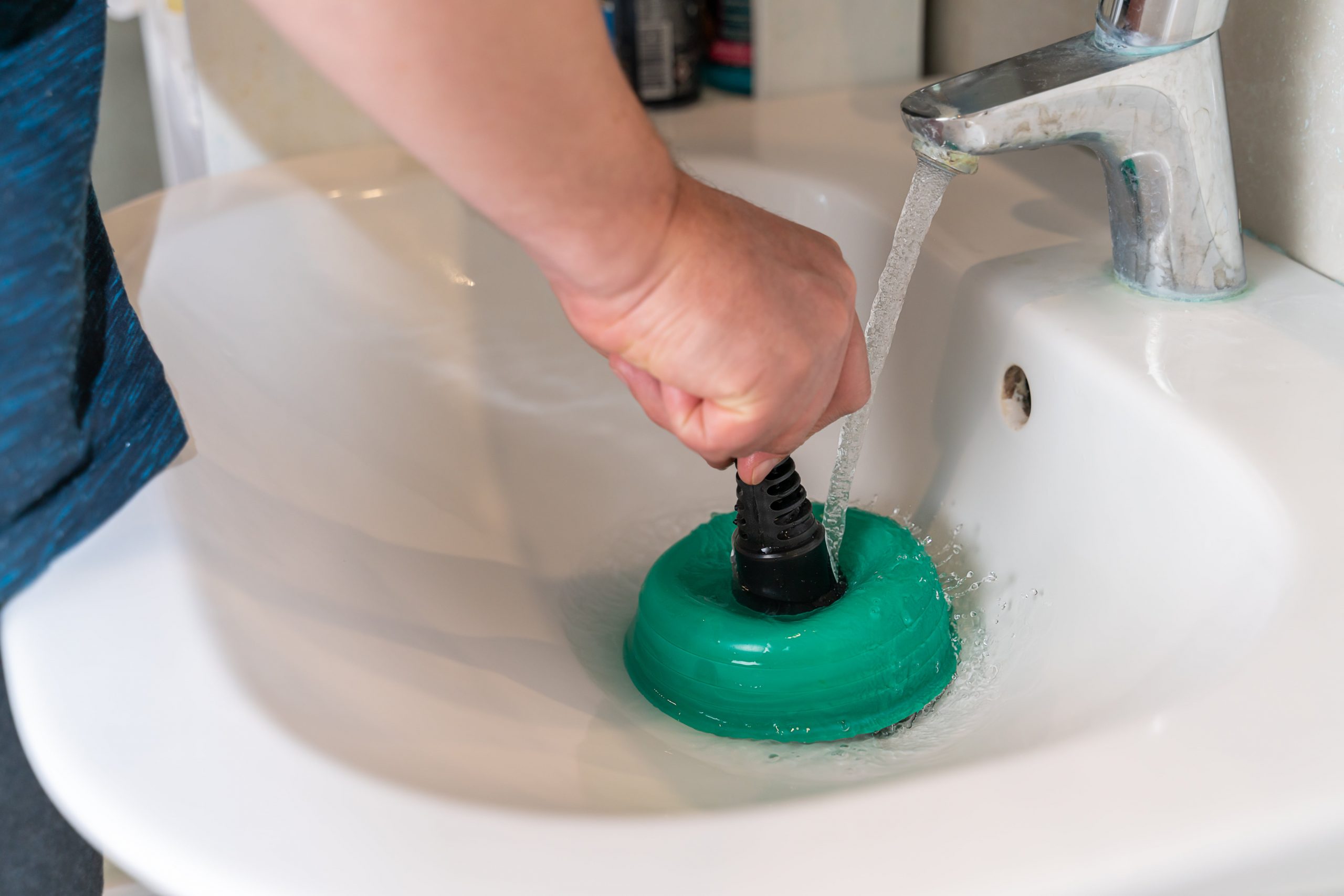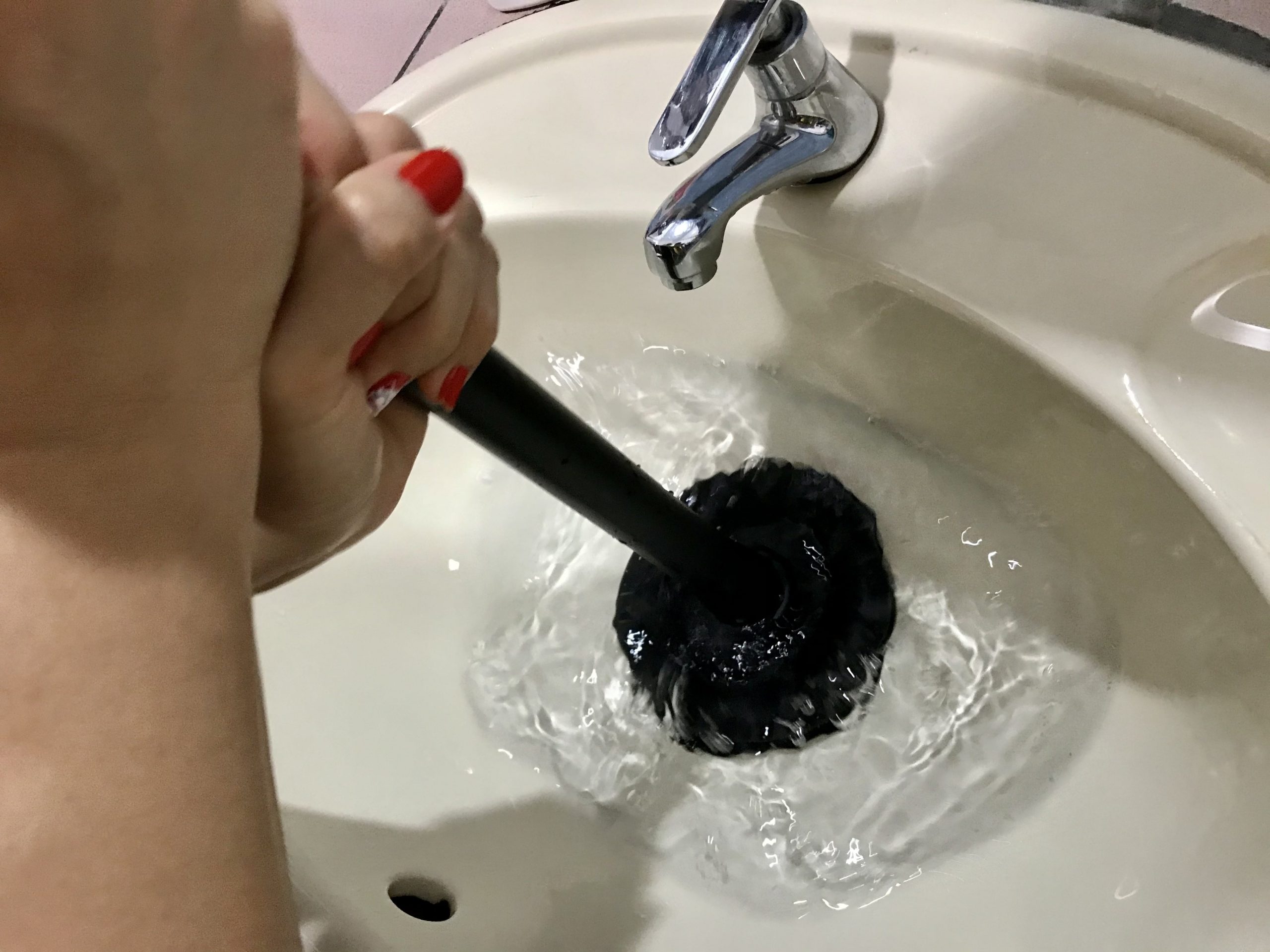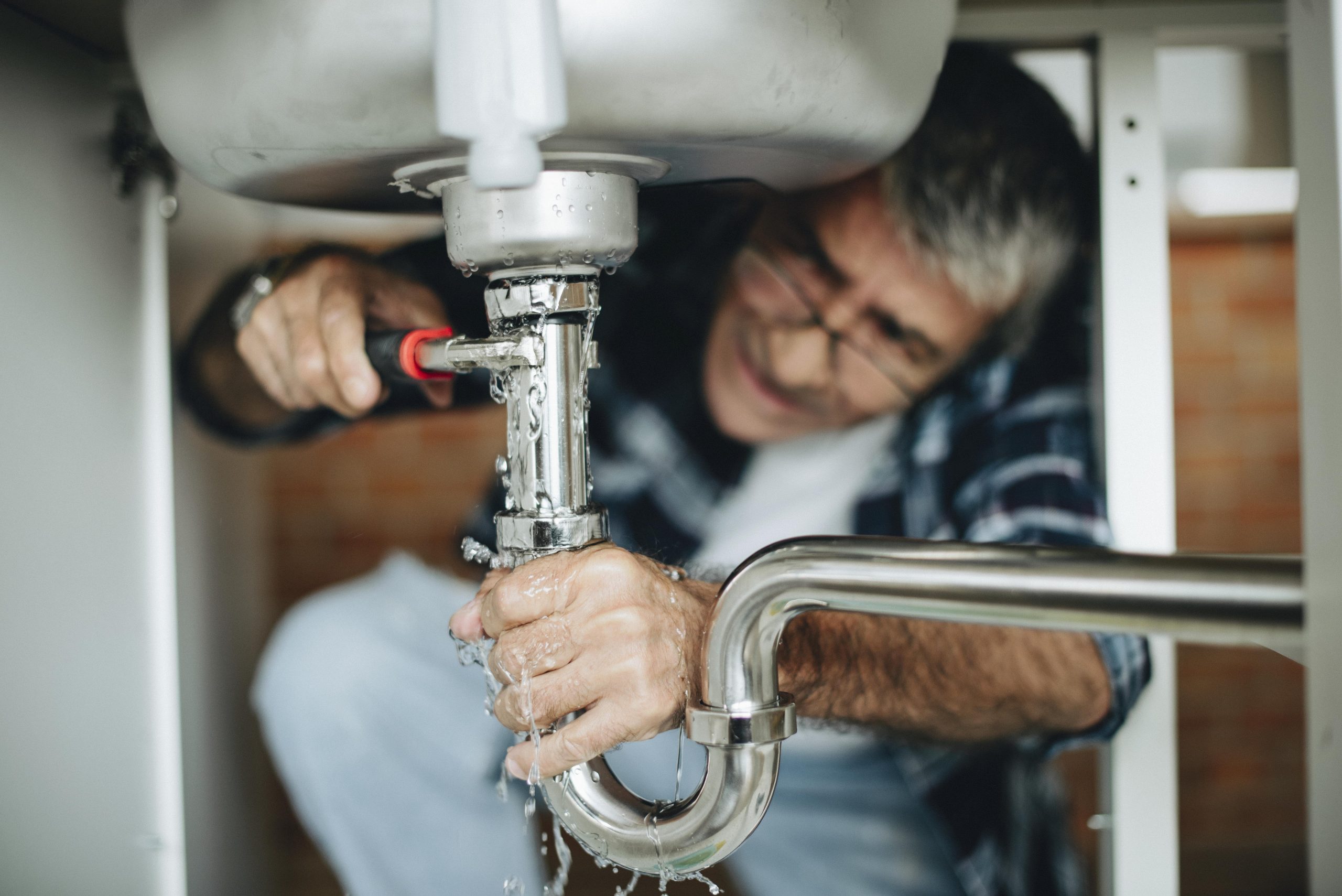How to Unclog a Garbage Disposal with Standing Water
We all use garbage disposal at home to get rid of leftover food from dishes or plates. Most people use it even when there’s a big gathering in their homes. But what to do if you are trying to use it and notice a clog with standing water? You surely need to think about unclogging now. When it’s time to unclog a garbage disposal, you can either do it the right way or a wrong way.
The wrong way to try to dispose of garbage or leftovers is with your hand. Even though it’s possible to remove clogged food particles using fingers, there are chances of making it worse. It may happen if you accidentally put garbage into the drainage pipe. This may even lead to garbage disposal water coming back up.
So, the right way of disposing of garbage is to spin the rotor under the sink for clearing out the clog. In case, your house has an Insinkerator model, it’s best to use the jam-buster wrench or any standard 1/4-inch hex wrench. For different models, you can use a regular wrench or a pair of pliers for unclogging.
What’s Causing the Clog?
It is important to know the causes of clogging in the first place before you think of how to unclog a garbage disposal. Here are a few common reasons that lead to clogging:
1. Incorrect Food Types
One common misconception about garbage disposals is that they can all types of food you stuff inside. But it’s not true.

Here are some food items that can cause clogging, as they cannot pass through the garbage disposal:
- Hard to chop foods: Pits, bones, seeds, corncobs, and ice cubes are hard to pass through the garbage disposal.
- Prevent the passage of water and food: Oil, grease, and fat can harden the water and food passage. This further leads to the clogging of garbage disposal and drainage pipe. Therefore, it’s best to avoid putting in hard eggshells and coffee grounds. Even starchy vegetables, like potato peels and beans, can lead to the formation of a thick paste that’s similar to grease, oil, and fat. Hence, they also jam the passage for water and food.
- Foods that prevent easy movement: Stringy food items, like celery, pasta, asparagus, lettuce, corn husks/silks, and banana peels also keep garbage disposal from working properly.
2. Too Much Food, Too Fast
Another misconception is that you can put tons of food at the garbage disposal at once. It is not true! If you test and push the limitations of a unit, it will overwhelm the device. When you add too much food inside a garbage disposable at once, it will not work as efficiently as it should. It means that larger chunks will get through and lead to clogging.
3. Non-Food Objects
Even non-food objects are another common items to clog a garbage disposal unit. Therefore, you must avoid putting non-food items, like a washcloth, a paper, a sponge, a foil, a plastic, and a flower plant clipping into the garbage disposable to avoid jams and clogs.
4. Not Washing Off the Leftover Waste
After use, some people put disposal switches in “off” mode. So, it will switch “on” only when it is time to grind more food. However, it is not the correct way to use a garbage disposal. The waste within the device often builds up gradually. It even prevents water from passing through.
The correct way to use garbage disposal is to keep it on after the completion of the food grinding process. At that time, you can turn on the water and let it run smoothly for one minute. This will clear off any stuck waste within the unit. And, then turn off the device.
5. Hot Water
The temperature of rinsing water also matters when it comes to unclogging garbage disposal. And, hot water is not ideal for rinsing disposal. It is because hot water spreads fats, grease, and oil around the disposal and within the pipes. When the grease, fats, and oils harden, they are likely to create a landing spot for food and cause a clog.
What is a Solution?
Here are the 5 easy steps to consider to unclog garbage disposal:
1. Manual Checkup
First of all, you have to check inside the disposal to figure out what is leading to a clog. You can use a flashlight and tongs or pliers to find out. You just have to put pliers or tongs within the unit and find the loose item. Repeat it until you have removed the item or gunk that’s causing a clog.

2. Baking Soda and Vinegar
Another effective DIY remedy to unclog disposal is baking soda and vinegar. These ingredients together lead to a fizzy foam combination that breaks down the clogs and cleans up the unit. You can use this solution particularly to remove grease, oil, and fat. It also helps in deodorizing the foul smell of garbage disposal.
How to start:
- Start with pouring baking soda into a garbage disposal.
- Now, pour vinegar into the garbage disposal.
- Wait for 20 minutes till the two ingredients brown down a clog.
- Finally, wash off the mixture with warm water.
3. Plungers
It depends on water pressure for pushing hard clogs down through a drainage pipe. When you plunge up and down firmly, the clog begins to loosen up and start moving.
How to do:
- Begin with grabbing a plunger while covering the drain.
- You even have to cover another drain with a stopper.
- Add enough water into the sink to make a watertight seal around the bottom of the plunger.
- Start plunging up and down to make the close loosen up.
- Repeat the movements quickly for a few minutes.
- Use a flashlight for removing any loose items.
- Finally, use water to rinse the drainage pipe.
4. Wooden Handle or Hex Wrench
In case, your garbage disposal comes with a hexagonal hole at its bottom center, you can use an L-shaped hex wrench or wooden handle. Garbage disposal comes with instructions to tell you the correct way to locate a hexagon and the way to use it.
Often, you have to stick a hexagonal end within the hexagon hole on the disposal’s outer side. It must match up with it and fit in. After that, use the hex wrench clockwise and anti-clockwise around 4-5 times. Do this until the blades spin freely in either direction. In case the blades spin freely in either direction, the clog is clean. After that, manually remove the clogged pieces using tongs or pliers.

You can even use a wooden handle for disposal without a hexagon hole. In this technique, you need to stick the wooden handle within the garbage disposal from the sink’s drain. Keep the handle on the top or near the blade. After that, move it back and forth unless the blades start moving freely in either direction. Also, remove the loose gunk using tongs and pliers.
5. Call an Expert Plumber
You can call an expert plumber to remove the clog if all the above-mentioned steps don’t work. An expert can carefully uninstall and reinstall the garbage disposal for getting rid of clogs, including elimination, cleaning, and re-installation of the attached P-trap.
Clearing the Garbage Disposal
There is a very easy strategy to remove debris from the gap. You have to reverse the rotor, flush the garbage disposal with water, and turn on the disposal to let debris wash away.

Here are the easy ways to clear garbage disposal for different models:
For Insinkerator Models: If you have installed an Insinkerator garbage disposal, you need to look for a slot to fix the hex wrench under the disposal in the rotor’s middle. Now, insert a 1/4-inch jam buster or hex wrench into the garbage disposal. After that, spin the wrench within the rotor back and forth a few times. At times, debris may get lodged tightly into the rotor to prevent spinning. If this is the case, an internal breaker trips to stop the motor from moving and burning out. It may require some force for getting the rotor going. Once it’s spinning freely, reset the device and turn on the water to dispose of the garbage again.
Other Models: If you don’t have an Insinkerator, instead of a hex slot, you can use a nut too. Instead of using a regular wrench for reversing the rotor, the process of clog clearing remains the same. Remember that the reset button is present on the canister’s side rather than the bottom ( as in the case of Insinkerator models). If there is nothing you can find to grip the underside of the rotor, you need to insert a wooden implement at the disposal’s mouth for reversing the rotor. Now, hook the implement on any one of the impellers and further use it as a lever for spinning the rotor.
Clearing the Drain
If you still see standing water in the sink after you unclog a garbage disposal, your drain is clogged. For clearing the drain, you have to disassemble the P-trap at the area where its curved section straightens out and lets into a wall.
After that, make the nut loose using pliers, remove it, and swivel away from the curved section. Loosen its other nut too for removing the curved section while emptying it. If there is no clogging within the pipe’s section, it needs to be in the horizontal waste arm. You can clear it using a sink auger.
Preventing Clogs
Clogs form over time, particularly if you often put rice, potatoes, and other starchy/greasy food items into a garbage disposal. So, make sure you use simple techniques to prevent grease and starch from building up in garbage disposal. Regular clean-up will ensure that you don’t have to deal with tough clogging and using that jam-busting wrench.
You can try filling up the garbage disposal with ice and then pour half a cup of Kosher salt into it. Let the mixture sit inside for 10 minutes. The ice will start to harden the starches and greases that may be collected in the gap. After you turn on the water and the garbage disposal, the salt and ice will remove the debris from the sides of the canister while carrying away gunk from the drain.
Conclusion
Sometimes garbage disposals clog and most of the time these are easy to fix. You have to keep monitoring what you put into your sink to avoid such a situation. There are various components integrated into the garbage disposal. So, it won’t be easier for you to understand all those components.
It’s best to use the mentioned solutions to get rid of clogging. Otherwise, it is best to call an expert plumber to help you out.
